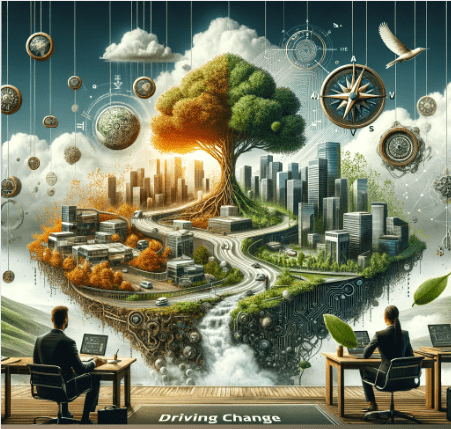After our blog that discusses the psychological, social and biological factors all working against humans who wish to make a change, this begs the question of why and how anyone ever makes a change. Tony Robbins put it best when he said:
‘Change happens when the pain of staying the same is greater than the pain of change.’
Essentially, it’s like wearing that old pair of uncomfortable shoes – eventually, the blisters become too much to bear, and we reluctantly venture into the shoe store. Likewise, businesses must recognise these blisters of stagnation and embrace change before their competitors start sprinting in the opposite direction. So, this short blog is going to give you a brief analysis of the factors driving change in an organisational setting. Or click here to read our other blog for a more extensive and detailed discussion.
External Pressures
One factor that drives change is external pressures such as market forces. Factors like increased competitiveness, technological advancements, or changing customer demands are all factors increasing the likelihood of change. These external factors create a sense of urgency and necessitate adaptation to remain competitive. Research supports this notion, suggesting that organisations facing increased competition were more likely to initiate strategic change efforts. A great example to illustrate how external pressures can encourage change is Amazon’s adoption from an online bookstore to an e-commerce giant. The organisation recognised the growth of e-commerce and changing consumer behaviour and transformed into the global e-commerce giant it is today. Clearly, external pressures can encourage change; however, it should be noted that Amazon was already an innovative organisation that’d shown a willingness to change. Many more organisations will resist change even in the face of external pressures, with Blockbuster exemplifying this. The once-dominant video rental company failed to adapt to new technology and shifting consumer preferences, leading to its decline and Netflix’s rise.
Internal Evaluation
Another important factor influencing change is that internal evaluation and performance metrics, such as financial performance, productivity, or customer satisfaction. Typically, this encourages change when performance falls below expectations. Poor performance or a gap between current and desired outcomes signals the need for change to improve results and achieve organisational goals. Research published demonstrates that poor financial performance was a key driver of strategic change efforts in organisations. IBM, a renowned technology company, embarked on a significant transformation in the 1990s after experiencing declining financial performance. The company shifted its focus from hardware to software and services, leading to a successful turnaround. Evidently, poor performance metrics triggered the need for change.
Leadership Vision
Thirdly, leadership vision and strategic decisions can also be a trigger and play a vital role in driving change within organisations. When leaders have a compelling vision for the future and articulate a clear strategic direction, it motivates change. Leadership provides a sense of purpose, inspires employees, and creates a shared understanding of the need for change. Research published highlighted the importance of leadership in initiating and driving organisational change. Change-embracing leaders encourage other like-minded people, and their vision for the future can help mitigate many of the factors contributing towards resistance to change, like fear of failure, desire for conformity and fear of the unknown. For example, Steve Jobs’s leadership of Apple transformed a struggling computer company into a global technology powerhouse. Job’s visionary leadership and strategic direction propelled Apple’s innovation and iconic products, such as the iPhone and iPad.
In essence, driving change in organizations hinges on navigating external pressures, leveraging internal evaluations, and embracing visionary leadership. Amazon’s leap from books to e-commerce behemoth, IBM’s pivot to software and services, and Apple’s reinvention under Steve Jobs exemplify the critical balance between adapting to market demands, recognizing internal signals for change, and following bold leadership visions. These elements collectively fuel transformation, demonstrating that success lies in acknowledging the urgency to evolve, diagnosing performance gaps, and pursuing a future shaped by innovative foresight. Understanding and acting on these drivers of change isn’t just strategic; it’s essential for survival and growth in today’s dynamic business arena.




































